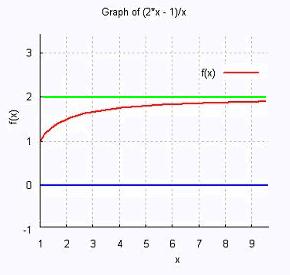Calculus II
Contents
Series
Integrals
Definite integrals
Some primitives
Numerical methods
Exercices
© The scientific sentence. 2010
|
|
Calculus II: Sequences
1. Introduction
A sequence is a list of real numbers written in a specific order. The list
can have finite or infinite number of terms. In general, we deal
with infinite sequences.
Example:
The sequence:
2, 5, 10, 17, ..., an, ... is an infinite sequence.
a1 = 2 is the first term,
a2 = 5 is the second term,
...
an the nth term. It is called general term of the sequence.
Explicitly, in this example:
an = n2 + 1
We denote a sequence as :
{a1, a2, ..., an,an+1, ...}, or
{an}.
The last form is given by a formula, as
{n2 + 1}
Remark that the (n+1)th term an+1 ≠ an + 1. The
integer (n + 1) is a subscript.
Not all the sequences have a general term. We can write down
any sequence. For example:
{1, 4, 1, 4, 2, 1, 3, 5, 6, 2, 3, 7, ... }
An alternating sequences has alternated positive and
negative terms. For example:
{- 2, + 4, - 8, + 16, ...}
Including the "..." means that the sequence is infinite.
2. Convergence of a sequence
2.1. Definitions
Let's consider a rod of length equal to 1. If one divides it in
two parts (1/2, 1/2) and divides the second half in two
parts (1/4,1/4), and so on, we get the following sequence when
taking a half each time:
1/2, 1/4, 1/8, 1/16, ...
This sequence has the general term an = (1/2)n
If we continue dividing indefinitely each obtained
half, we will find zero, that is an = 0.
We say that the limit of the sequence
{(1/2)n} is 0,
and we can write:
For any sequence of general term an, when:
lim an = L (L ) ) |
| n → ∞ |
| the sequence { an } is convergent. |
If the limit L does not exist, or infinite, the sequence
is divergent.
2.2. Alternating sequence
For an alternating sequence {(-1)nbn} with
bn > 0:
| If lim bn | = 0 , the sequence is convergent to 0. |
| n → ∞ | |
| If lim bn | ≠ 0 , the sequence is divergent. |
| n → ∞ | |
2. Graphing a sequence
We can graph a sequence by plotting the points as n ranges
over all possible values.
Example: The graph of the sequence {(2 n - 1)/n}:

The graph shows the 11 first points of the 11
terms of the sequence.
We remark that as n increases, the terms in the sequence,
get closer and closer to 2. We then say that 2 is the limit
of the sequence and write:
| lim an | = lim (2 n - 1)/n = 2 |
| n → ∞ | n → ∞ |
|
|